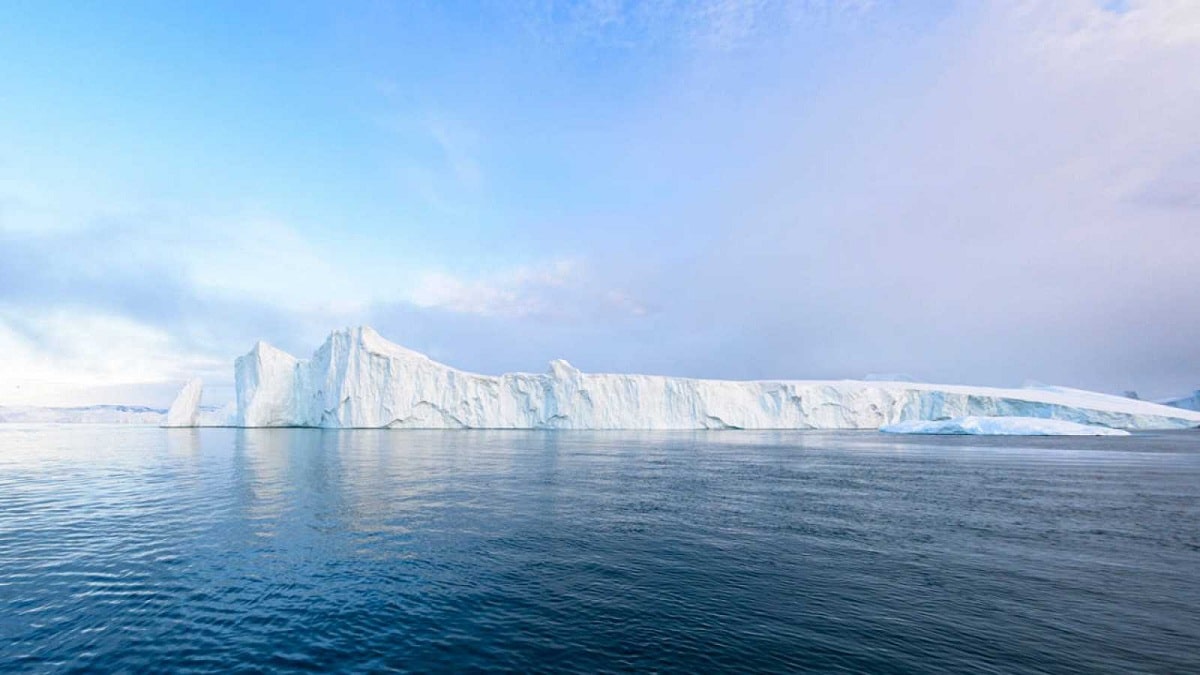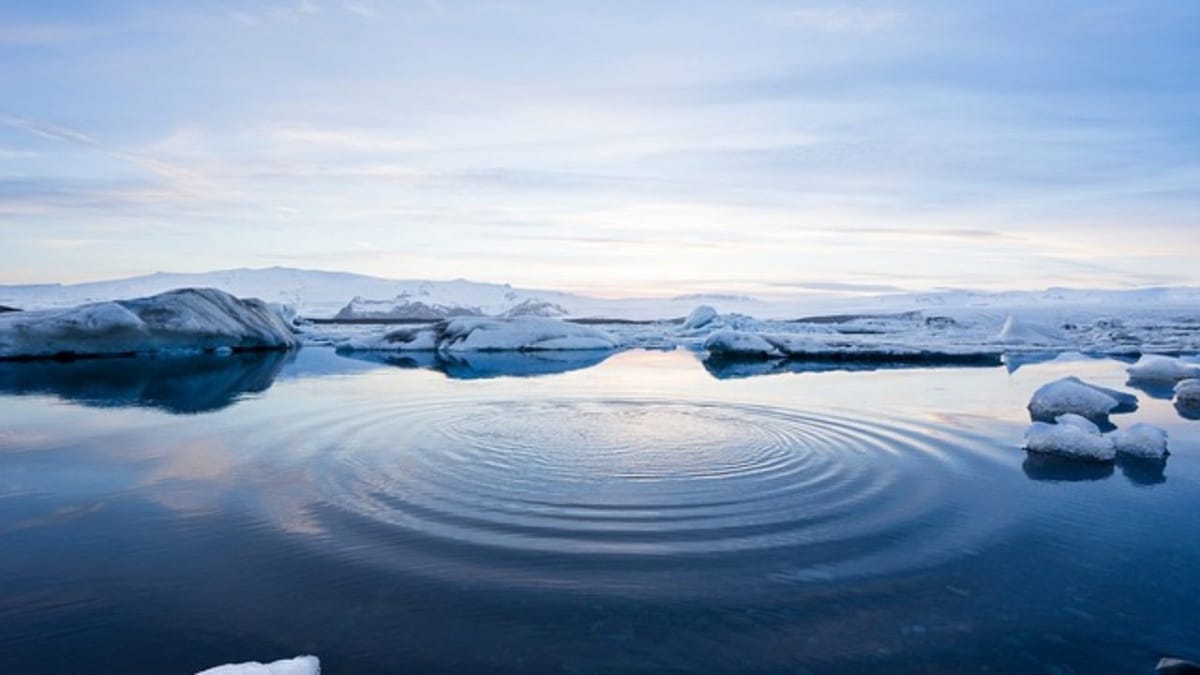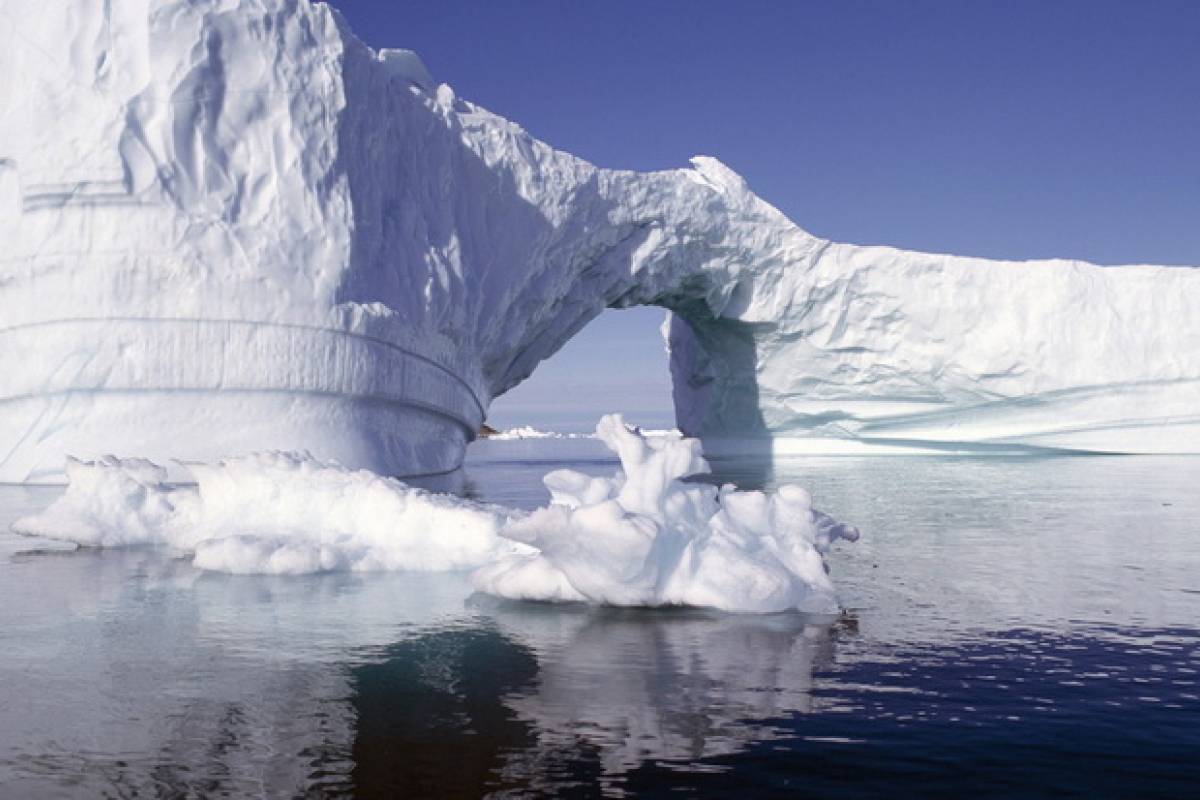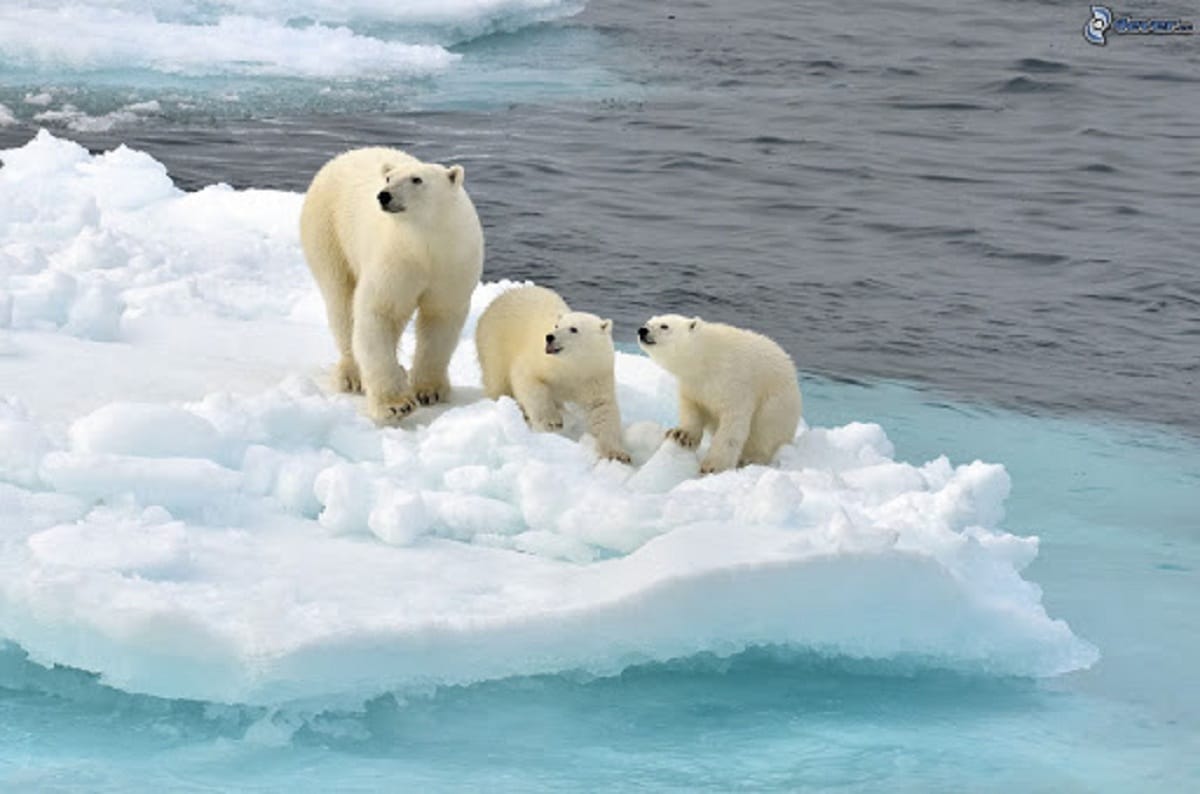
Between the oceans of the planet, the Arctic Ocean it is the smallest and most northern body of water. It is also considered the coldest ocean on our planet since most of its waters are covered by a huge mass of ice throughout the year. Inside it is life adapted to these hostile conditions of a cold climate. However, it is one of the oceans most affected by the negative effects of climate change and global warming.
In this article we are going to tell you all the characteristics, evolution, flora and fauna of the Arctic Ocean.
Key features

The main difference it has with the Antartic Ocean is that it has a continental shelf on which the ice is located. In the case in which the ice melt continues at this rate, it will be the South Pole that increases sea level. The Arctic Ocean has no continental shelf, but only frozen water. This causes the frozen rubble to be floating in the central waters. These large masses of ice are surrounded by the entire sea during the summer and winter months, As water freezes, its thickness will grow.
It is located in the northern hemisphere in the region that is closest to the Arctic Circle. It limits in regions close to Asia, Europe and North America. Cross waters with him Atlantic Ocean through the Strait of Fram and the Barents Sea. It also borders the Pacific Ocean through the Bering Strait and the entire littoral coast of Alaska, Canada, Northern Europe, and Russia.
Its main depth is between 2000 and 4000 meters. It has a total area of about 14.056.000 square kilometers.
Formation and climate of the Arctic ocean

Although the formation of this ocean is not well understood, it is thought that it was formed a long time ago. There are extreme environmental conditions that make studies of this ocean difficult. It is inhabited by Eskimo populations for approximately 20.000 years. These people have been able to adapt to the extreme weather conditions found in these places. From generation to generation they have been able to pass on the necessary knowledge to be able to adapt and get used to life in these places.
In this oceans fossils have been found that indicate evidence of organic life that is permanently frozen. It is estimated that it makes approximately some 70 million years ago it had the same conditions that the Mediterranean Sea has today. And it is that in some times and periods of geological time this ocean has been totally discovered without any ice.
Average temperatures during winter in this ocean drop to values of -50 degrees, which makes survival in this place quite an odyssey. The polar climate is one of the coldest on the planet, which causes it to have more or less persistent and very low annual temperatures. It is mainly divided into two seasons of about 6 months each. We are going to analyze the two stations that are in the Arctic Ocean:
- Summer: During the summer month the temperatures oscillate around 0 degrees and there is continuous light from the sun 24 hours a day. There are also continuous and snowy fogs that prevent the ice from melting completely. From the summer time there are also weak cyclones with rain or snow.
- Winter: the temperature reaches values of -50 degrees and there is a perpetual night. During this time of year the sun is not seen at any time. The skies are clear and the weather conditions are stable. This is because there is no influence from sunlight.
We cannot forget that the main reason that meteorological phenomena exist is because of the action of sunlight. Therefore, during the winter months there are very stable weather conditions. Due to the effects of climate change and global warming, the temperatures of the summer months are rising more and more, causing an almost complete melting of the entire Arctic Ocean.
Flora and fauna of the Arctic ocean

Although this ocean is in extreme conditions, there are numerous mammals that are adapted to these environments. Most of them have white fur that serves as camouflage and protection against the cold. You can count more or less about 400 species of animals and are adapted to the intense cold of this region. Among the best known we have 6 species of seals and sea lions, whales of various types and the polar bear, being the best known.
There are also microscopic mollusks known as krill that play a vital role in the marine ecological pyramid. The vegetation is much scarcer, barely made up of mosses and lichens.
The ice caps that form in the Arctic Ocean are large frozen masses. The non-aquatic surface is growing twice in size during winter and they are surrounded by icy water in summer. These caps usually reach about 2 to 3 meters thick and they are constantly moved by the waters and winds that come from Siberia. We can eventually see some pieces of ice that collide with each other and become completely merged. This creates a depression ridge that is more than three times the thickness of the caps that were initially formed.
It can be said that the salinity of this ocean is the lowest on the entire planet. This is due to the fact that evaporation is very low and the meltwater, which is sweet, influences it.
Current situation
It is estimated that in this ocean 25% of all world reserves of oil, natural gas, tin, manganese, gold, nickel, lead and platinum are found. This means that the thaw allows access to these resources as an energy and tactical zone of vital importance for the future. This ocean is the largest natural freshwater reserve in the world. Its thaw is causing its imminent demise.
I hope that with this information you can learn more about the Arctic Ocean.